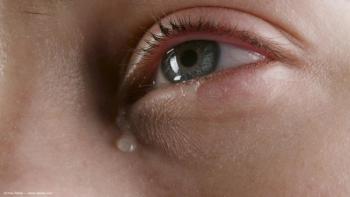
Heterogeneous Ocular Biomarkers May Predict Sjögren’s Disease Extraocular Features
Key Takeaways
- Sjögren’s disease exhibits diverse ocular presentations, with distinct associations between dry eye symptoms and extraocular manifestations, suggesting different underlying mechanisms.
- Analysis of 1,541 patients revealed heterogeneity in dry eye symptoms, with significant spontaneous or evoked pain and low tear production in many individuals.
A study reveals diverse ocular symptoms in Sjögren’s disease, linking eye features to oral and pain manifestations for personalized treatment strategies.
A study of the ocular features of Sjogren’s disease reported the heterogeneity of the disorder’s ocular presentations.1 The authors, led by research fellow Drew C. Baeza, MD, and associates, reported “distinct associations between specific dry eye and the extraocular Sjögren’s disease manifestations.”
Baeza is from the Department of Cornea, University of Miami, Health System Bascom Palmer Eye Institute, Miami, and the Department of Medicine, Nova Southeastern, University, Dr Kiran C Patel College of Allopathic Medicine, Fort Lauderdale, FL.
The investigators explained the rationale for their study. They pointed out that while patients with Sjögren’s disease commonly have dry eye,2 the clinical presentations can differ among these patients. “Specifically, some individuals present with ‘typical’ findings of Sjögren’s disease, that is, symptoms of dryness with low tear production and ocular surface staining. Yet, others present with symptoms of dryness (and other ocular dysesthesias such as burning, aching, tenderness, and light sensitivity) that are out of proportion to the examination findings.3 This reality suggests that different mechanisms may underlie symptoms of dryness (and other unpleasant dysesthesias) in Sjögren’s disease,” the investigators commented.
In light of that, they undertook the study under discussion to determine if certain dry eye metrics are related to oral and pain manifestations of Sjögren’s disease. They performed a secondary analysis of the Sjögren’s International Collaborative Clinical Alliance dataset and investigated which of 13 dry eye features were associated with various extraocular metrics, Dr. Baeza and colleagues recounted.
Results of the dry eye analysis
The mean age of the population of 1,541 patients with Sjogren’s disease, defined according to the American College of Rheumatology/European League Against Rheumatism criteria, was 52 ± 13.5 years, of whom 94% were women.
“The heterogeneity in the dry eye symptoms and signs was noted in individuals with Sjögren’s, with approximately one-third of individuals reporting significant spontaneous and/or evoked pain using various descriptors and indicating certain triggers, and approximately half having low tear production. Similarly, heterogeneity was noted with respect to oral and pain complaints, with extraocular pain symptoms found in approximately one-third of the population,” the authors reported.
They also related that different ocular phenotypes were associated with different extraocular findings, ie, ocular grittiness/scratchiness in the eyes (odds ratio [OR] = 1.6), blurred vision (OR = 1.4), and low tear production (OR = 1.8) were most closely aligned with oral dryness. However, they found that ocular burning/stinging (OR = 1.6), discomfort in low humidity (OR = 1.2), and no dry eye signs, such as normal tear production (OR = 0.7) and no ocular surface staining (OR = 0.6), were most closely associated with extraocular pain. This new information added to the body of knowledge about ocular presentations in Sjögren’s disease.
In commenting on their results, Dr. Baeza and colleagues said, “Our findings suggest that divergent processes, perhaps driven by nerve dysfunction, occur in multiple compartments in Sjögren’s disease, explaining the variability in disease presentations and the link between ocular and extraocular phenotypes. Understanding disease contributors in an individual patient can help form personalized treatment strategies for Sjögren’s disease, including ones that target underlying neurosensory processes.”
The investigators’ hope is that obtaining a better understanding of disease presentations and mechanisms will lead to both improved treatment algorithms and quality of life for patients with Sjögren’s disease.
“Our data suggest that the eye may be a useful biomarker of disease status that mirrors findings in the rest of the body and may give insight into divergent disease mechanisms that drive phenotypes. Further studies are needed to examine how this information relates to treatment response in Sjögren’s disease,” they concluded.
References
Baeza DC, Sanchez V, Goldhardt R, et al. The eye as a window to oral and pain symptoms in Sjögren’s disease. Br J Ophthalmol. 2025;0:1–8. doi:10.1136/bjo-2024-326748
2.Malladi AS, Sack KE, Shiboski SC, et al. Primary Sjögren’s syndrome as a systemic disease: a study of participants enrolled in an international Sjögren’s syndrome registry. Arthritis Care Res (Hoboken). 2012;64:911–8.
Sanchez V, Dobzinski N, Fox R, et al. Rethinking Sjögren beyond inflammation: considering the role of nerves in driving disease manifestations. Eye Contact Lens. 2024;50:200–7
Newsletter
Don’t miss out—get Ophthalmology Times updates on the latest clinical advancements and expert interviews, straight to your inbox.













































